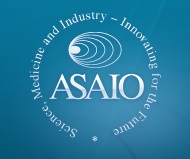This a follow up to my entry from last month entitled “Conference Networking”.
 Last month I took my first steps into the industry in which I plan on spending my career. To do this, I joined the American Society for Artificial Internal Organs (ASAIO) and attended its annual conference. I had been to a couple of academic biology conferences alone before, so I was not very concerned with being by myself. And as I outlined in the previous post, I had my clear goals for learning and networking:
Last month I took my first steps into the industry in which I plan on spending my career. To do this, I joined the American Society for Artificial Internal Organs (ASAIO) and attended its annual conference. I had been to a couple of academic biology conferences alone before, so I was not very concerned with being by myself. And as I outlined in the previous post, I had my clear goals for learning and networking:
- Identify current research
- Introduce myself to everyone
- Investigate the companies/institutions doing the work
I am happy to say that I made great progress on each of those points! Not only did I walk away from the conference knowing much more about the work being discussed, but I made a few contacts and I scouted out a few companies.
Additionally, Richard Wampler, MD, Associate Prof Surgery at Oregon Health Sciences University gave such a fantastic and inspiring keynote speech which felt like it was aimed directly at me. The morning before, Kurt Dasse, PhD, President & CEO, GeNO LLC gave an overview of the society that was both welcoming and motivating. ASAIO just felt right as an organization to which I can contribute.
This motivation was essential to my enjoyment of the conference due to the lack of tissue engineering. I was surprised to see that most of the talks were about mechanical heart pumps. Sure, there was a good amount of work being done with artificial kidneys but the meeting as a whole was quite bioengineering heavy. Thankfully the talks were all pretty good and I picked up the engineering problems and solutions quickly.
However, not everything was as expected. First, this conference was a large mix of engineers, business leaders, researchers, and physicians. Being used to a broadly academic crowd, this new group of people felt a bit more closed off, guarded. There are definitely differences in the cultures of all those groups. I made it a point to introduce myself to as many people as possible, including groups. Some groups, like a small group of Yale medical students was friendly while others were very dismissive.
Another unexpected point was the lack of diversity. Biomedical research, speaking broadly, felt very diverse when compared to the ASAIO membership. I immediately felt how helpful it is to have someone who merely looks like you in a position of power or authority. Perhaps it was a lack of familiarity with the field, but I felt a bit less secure when a vast majority of the talks were given by white males over 45.
Thankfully, ASAIO facilitates a subgroup called fyi (for young innovators, under 35). This group is amazingly diverse and was a true fresh breath. The students, postdocs, and leaders I met in this group were very interesting and passionate. I hope to interact with them further. The ASAIOfyi group held a couple of luncheons to help the new generation interact with those who were more experienced. This definitely helped!
In summary, while the meeting did not help me directly find a job or a very helpful lead, it did lay the groundwork for my career path. I learned that there is a ton of room in the tissue engineering field and that the companies out there (as a whole) really have been focusing only on mechanical solutions. I believe hybrid biological-mechanical devices will produce the best results in long-term replacement artificial organs and therapeutics.
If I met you at the meeting, thanks for stopping by the site!


